MRE
MRE - Ministry of Foreign Affairs
For the third consecutive month, there has been a growth trend in the number of visas granted for entry into the country, with a positive variation compared to February (35.0%) and a significant increase of 65.0% compared to March 2022 (Graph 1).
Visas issued for tourism purposes constituted the majority and were the primary factor driving the positive variation observed in the month (Graph 2).
Among the nationalities, Chinese, Angolans, Indians, and Afghans were the ones who benefited the most from the visas issued in March. Cubans had a slightly higher representation than individuals from the US and Haiti (Map 1).
GRAPH 1
Number of visas issued by consular offices - Brazil, 2021-2023
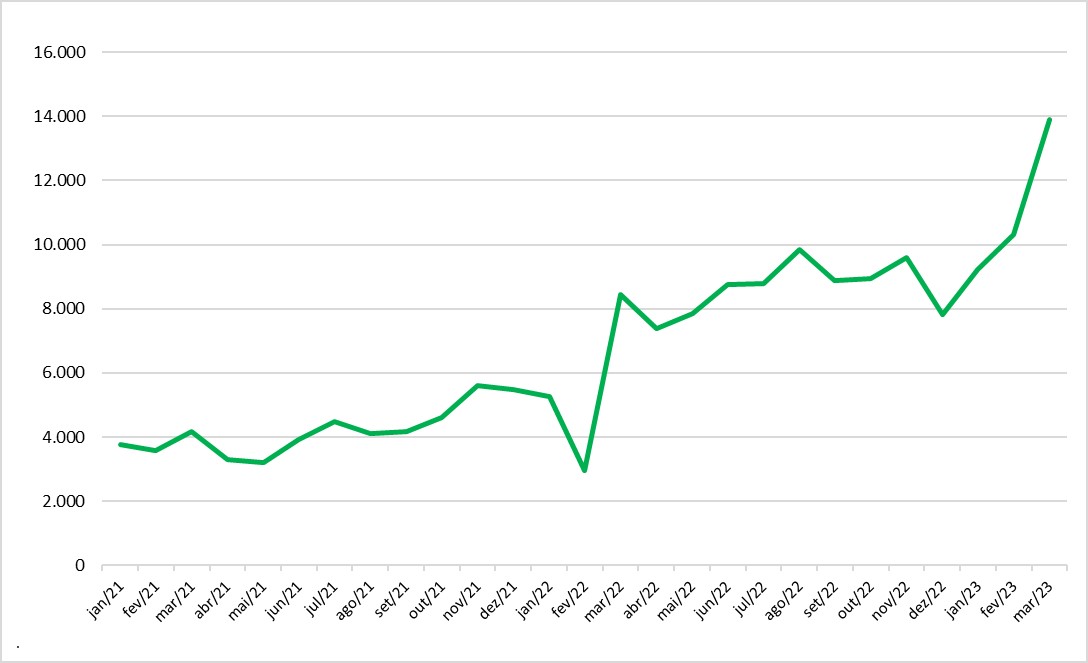
Source: OBMigra (2023), based on data from the Ministry of Foreign Affairs.
GRAPH 2
Number of visas granted, according to typologies - Brazil, February and March 2023.
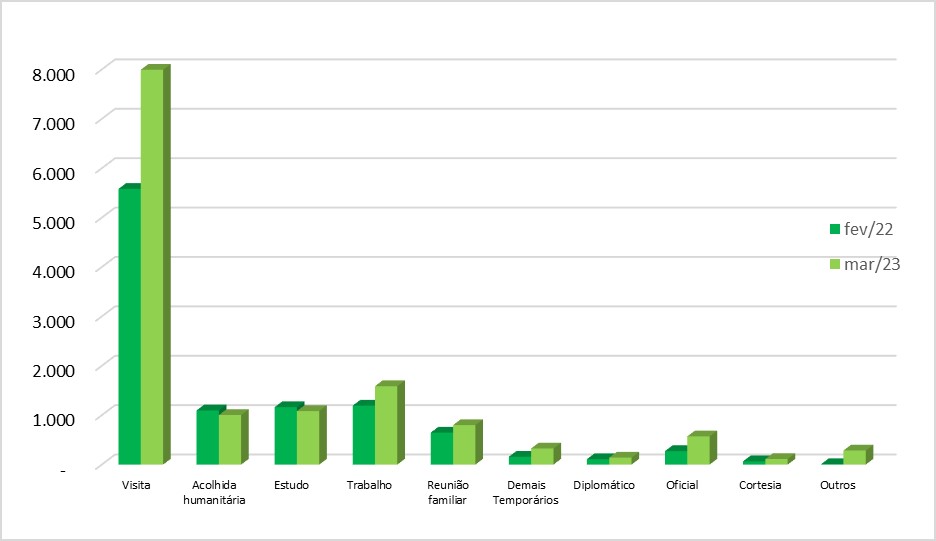
Source: OBMigra (March 2023), based on data from the Ministry of Foreign Affairs.
MAP 1
Number of visas granted by main nationalities - Brazil, March 2023.
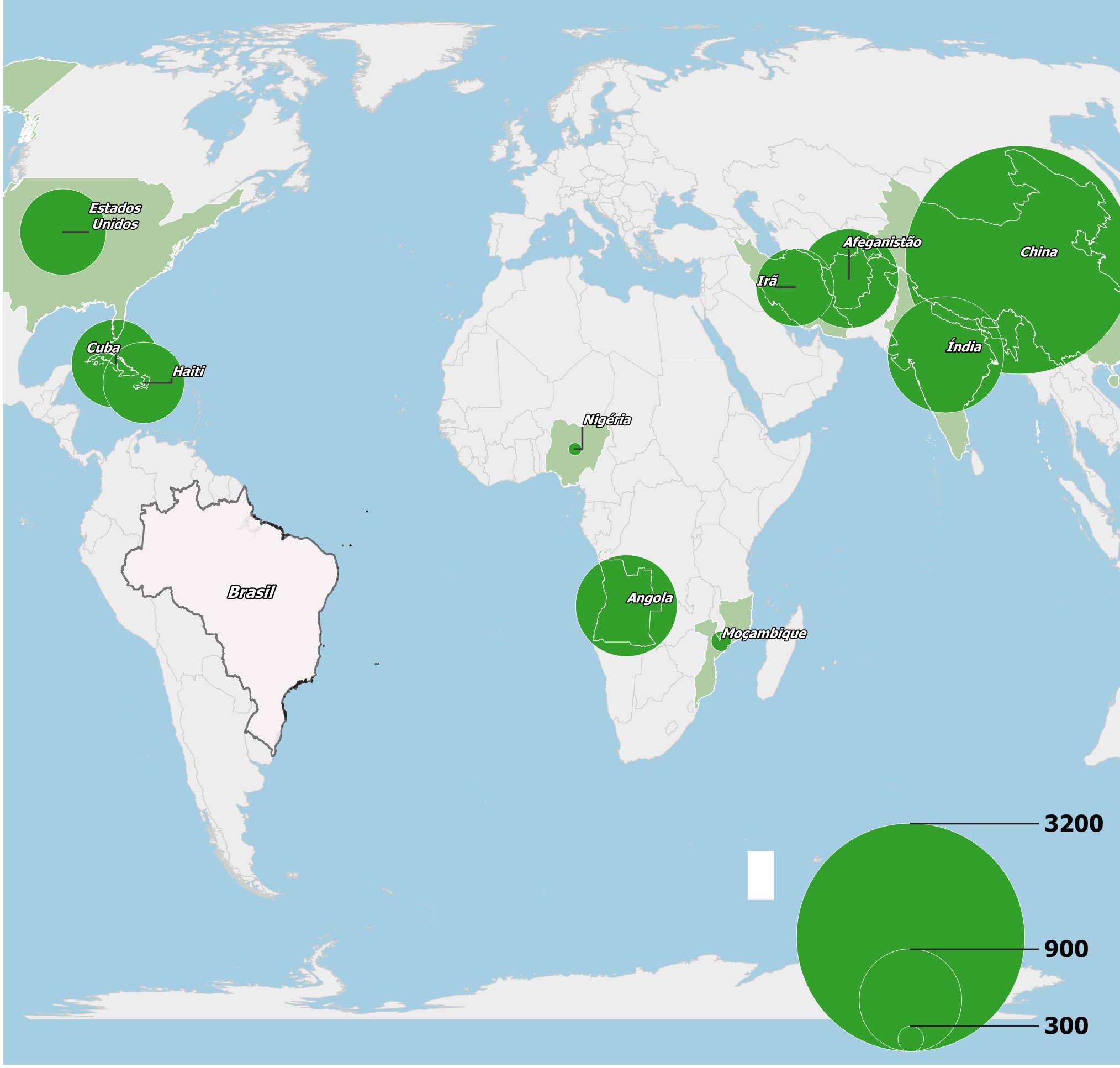
Source: OBMigra (March 2023), based on data from the Ministry of Foreign Affairs.
STI
STI (International Traffic System)
Cross-border movements of people have been decreasing for the second consecutive month. In March, there were 2.3 million entries and exits, compared to 2.6 million in February and 3.2 million in January (Graph 3).
The decline observed during this month was primarily driven by a decrease in tourist activity (Graph 4).
GRAPH 3
Cross-border movements, by month of registration, Brazil 2019/2023
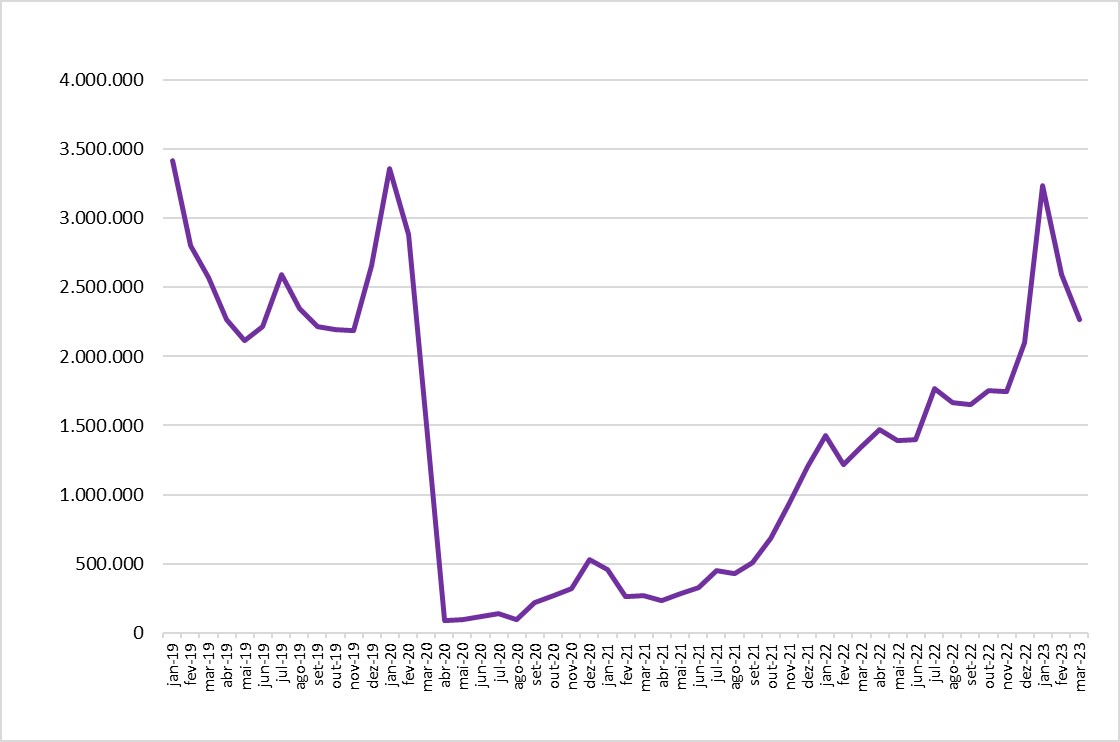
Source: OBMigra (2023), based on data from the Brazilian Federal Police, International Traffic System (STI).
GRAPH 4
Cross-border movements of people, according to typology - Brazil, February and March 2023.
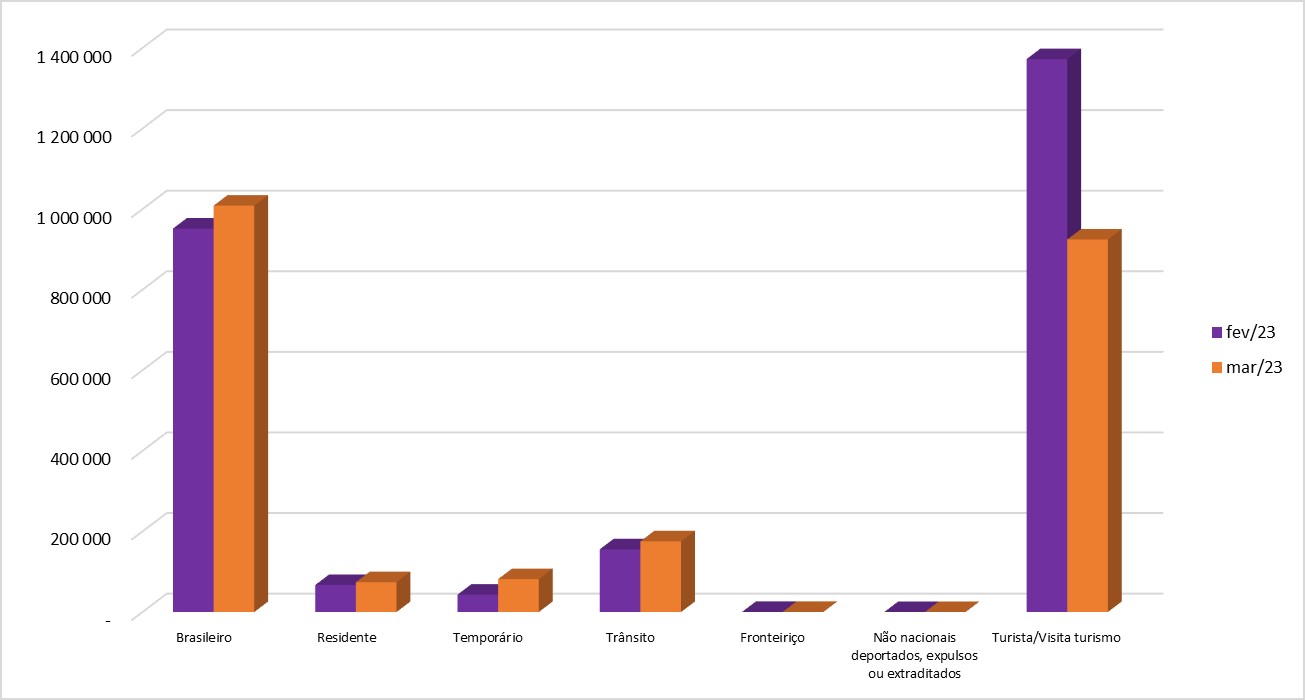
Source: OBMigra (2023), based on data from the Brazilian Federal Police, International Traffic System (STI).
SISMIGRA
SisMigra (National Migration Registry System)
Since December 2022, there has been a consistent increase in the volume of registrations for refugee status (Graph 5). The month's outcome was influenced by the implementation of eligibility criteria 209 (for residents in Mercosur and associated countries) and 280 (for study purposes).
Notably, compared to February, there was a significant increase in registrations in São Paulo (SP), Manaus (AM), Curitiba (PR), and Rio de Janeiro (RJ), as indicated in Graph 6.
Venezuelans remained the primary group to obtain residence registration in the country. It is worth noting that among the top ten nationalities, except for the US, all are from the Global South, with the Afghan among them (Map 2).
GRAPH 5
Number of immigrant registrations, by month of registration - Brazil, 2019/2023
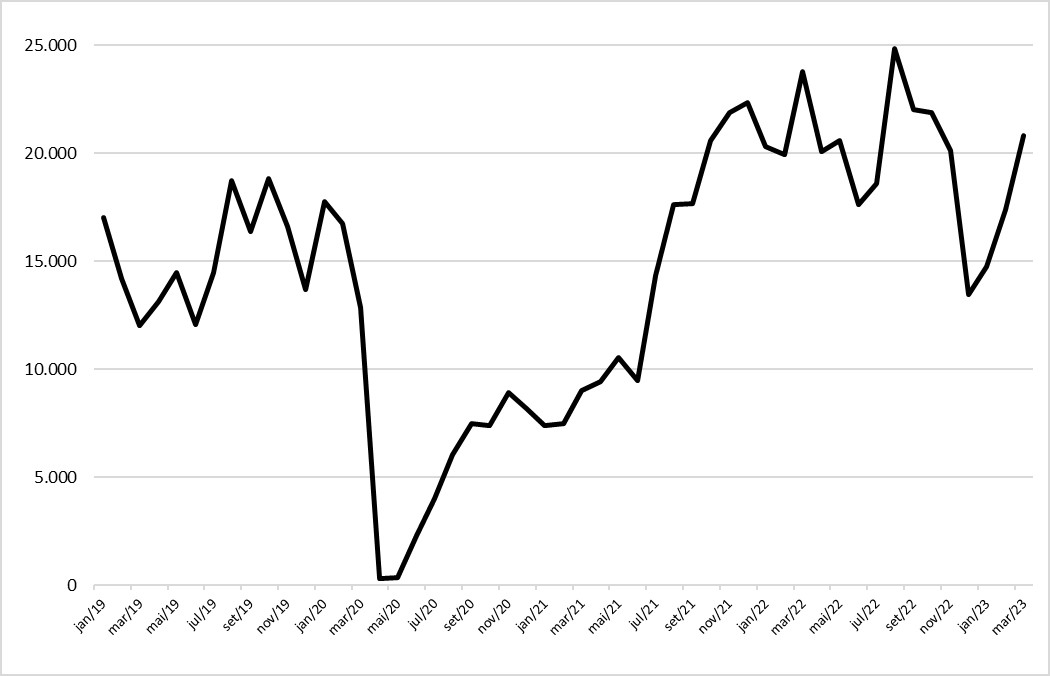
Source: OBMigra (February and March 2023), based on data from the Brazilian Federal Police, National Migration Registry System (SISMIGRA).
GRAPH 6
Number of migrant registrations, by main municipalities - Brazil, Fabruary and March 2023.
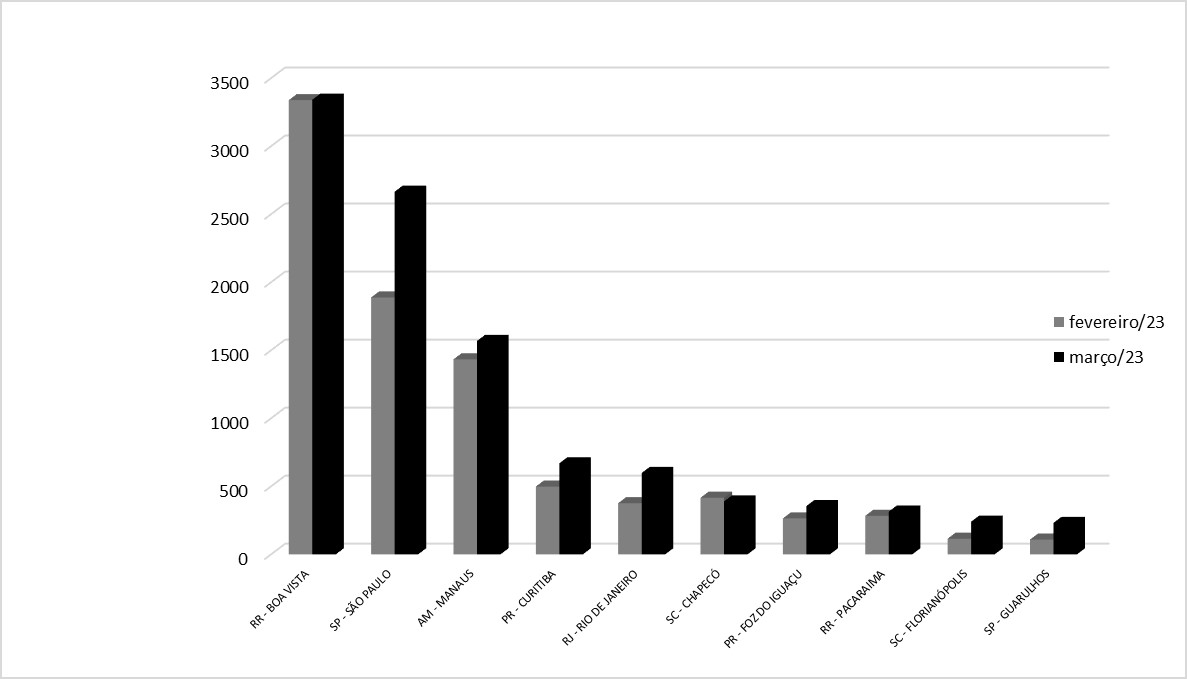
Source: OBMigra (February and March 2023), based on data from the Brazilian Federal Police, National Migration Registry System (SISMIGRA).
MAP 2
Number of immigrant registrations, by main countries of bith, March 2023.
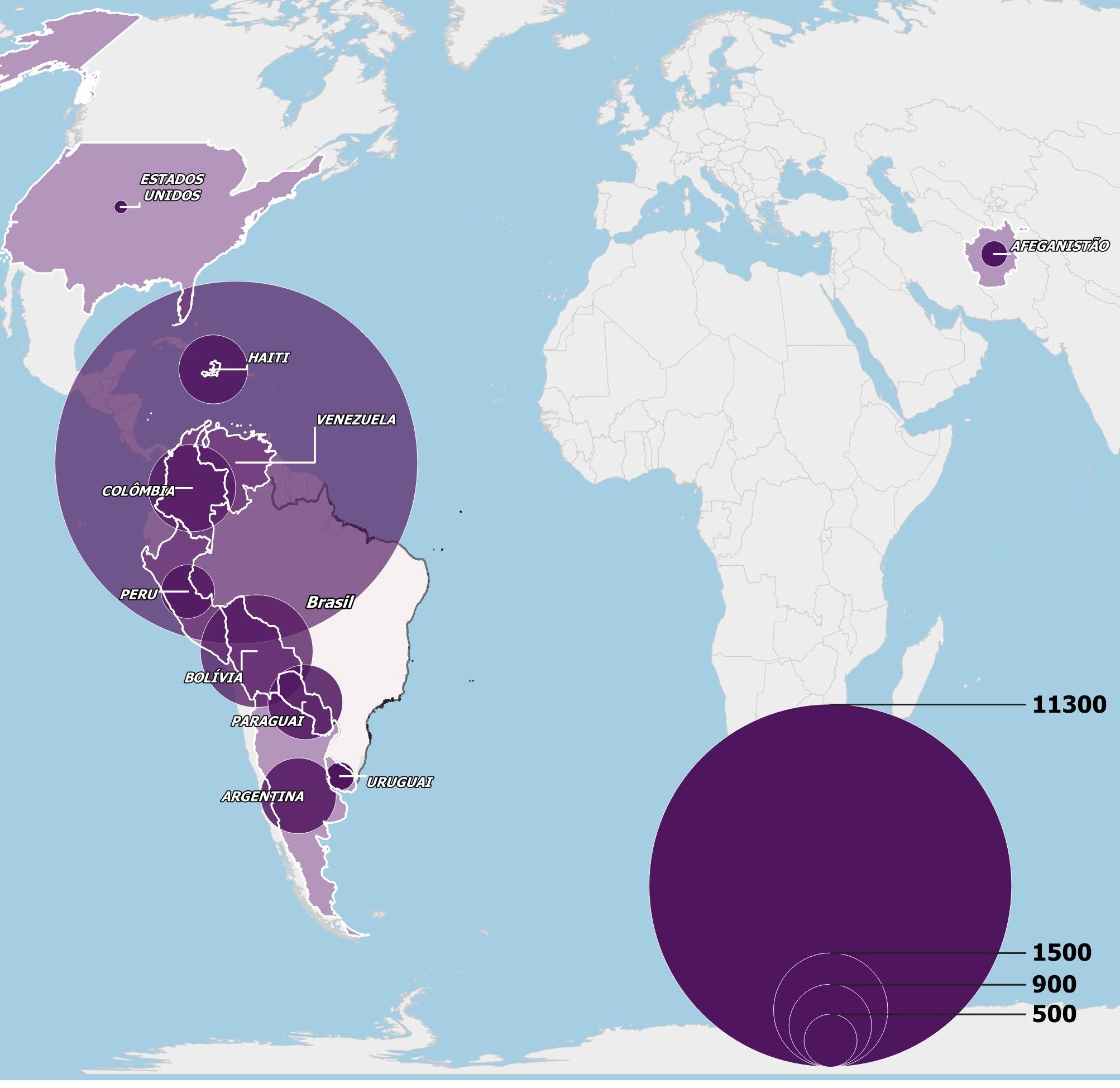
Source: OBMigra (March 2023), based on data from the Brazilian Federal Police, National Migration Registry System (SISMIGRA).
Solicitantes
Applicants for refugee status recognition
Over the past four months, there has been a consistent increase in applications for refugee status recognition (Graph 7).
From a geographical perspective, although Boa Vista and Pacaraima, municipalities in the state of Roraima (RR), remain prominent, São Paulo (SP) and Curitiba (PR) were among the cities that experienced the highest positive variation compared to February (Graph 8).
In March, Venezuelans and Cubans were the groups that submitted the highest number of applications for recognition of refugee status (Map 3).
GRAPH 7
Number of applications for recognition of refugee status, by month of registration - Brazil, 2019-2023
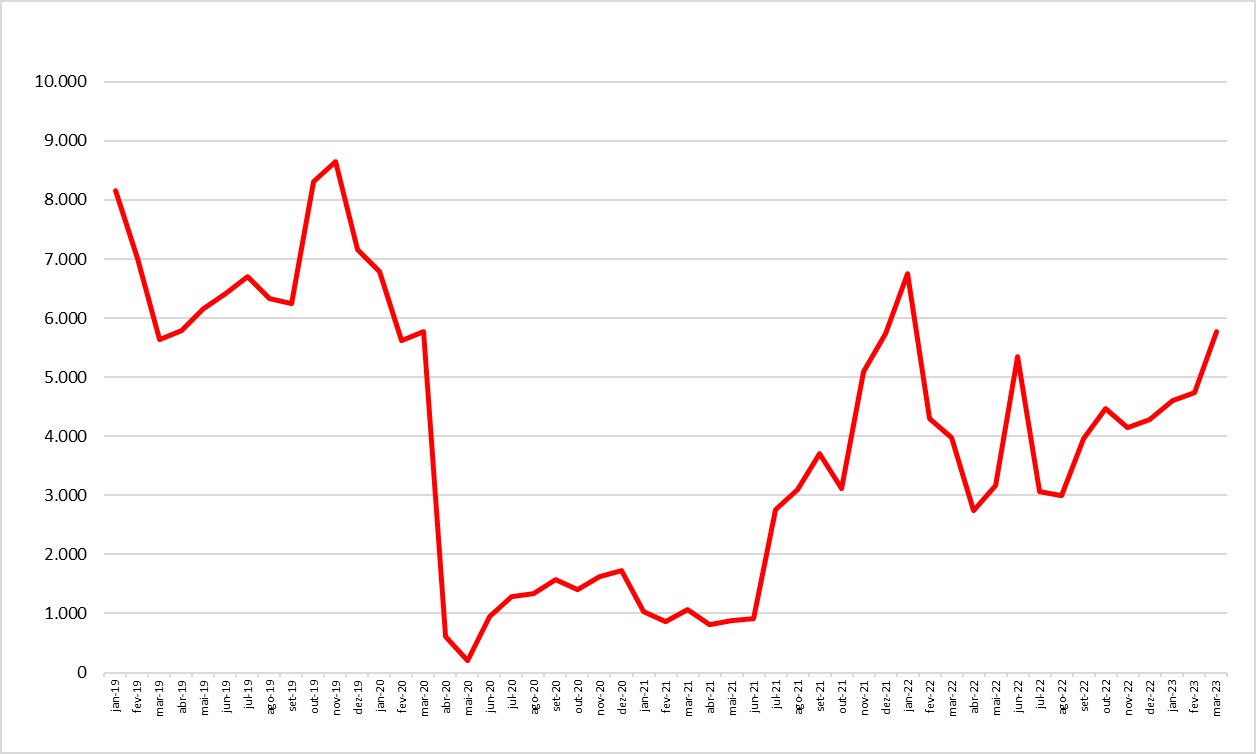
Source: OBMigra (2023), based on data from the Brazilian Federal Police, Asylum Claims, and the System of the National Committee for Refugees (SISCONARE).
GRAPH 8
Number of applications for recognition of refugee status, by main municipalities - Brazil, February and March 2023.

Source: OBMigra (February and March 2023), based on data from the Brazilian Federal Police, Asylum Claims.
MAP 3
Number of applications for recognition of refugee status, according to main countries, March 2023.
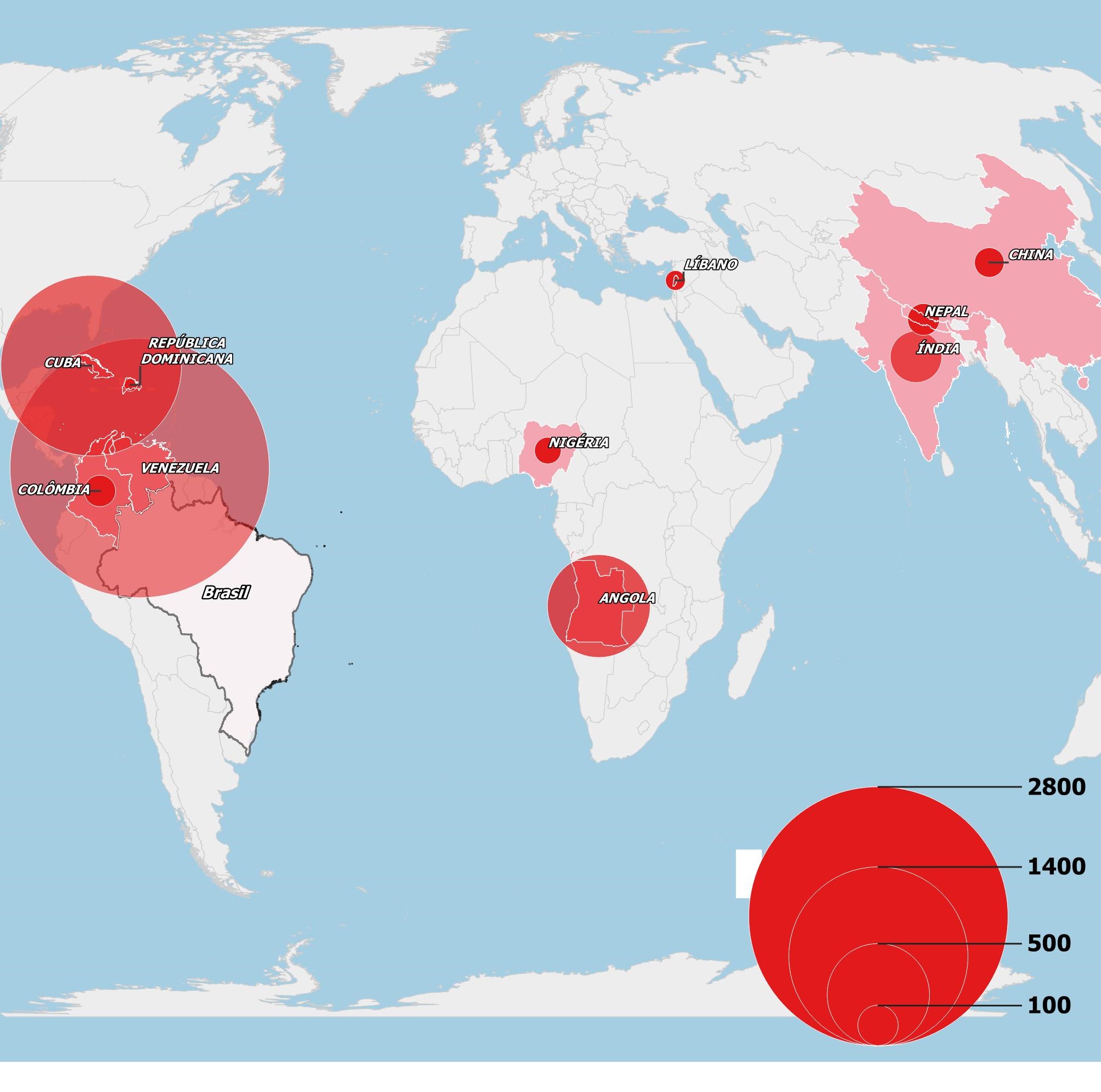
Source: OBMigra (March 2023), based on data from the Brazilian Federal Police, Asylum Claims.
CGIL
CGIL (General Coordination of Labor Immigration)
The number of residence permits for work and investment purposes showed a positive variation compared to the figures from February (29.4%) and March 2022 (49.2%), as depicted in Graph 9.
Occupations in high-school level technical fields and professions in the sciences and arts were the most common among those who obtained residence permits for work purposes (Graph 10).
Among skilled workers, Chinese and Japanese nationals were the top nationalities (Graph 11).
GRÁFICO 9
Number of works permits for labor and investment purposes, by month of registration - Brazil, 2019-2023
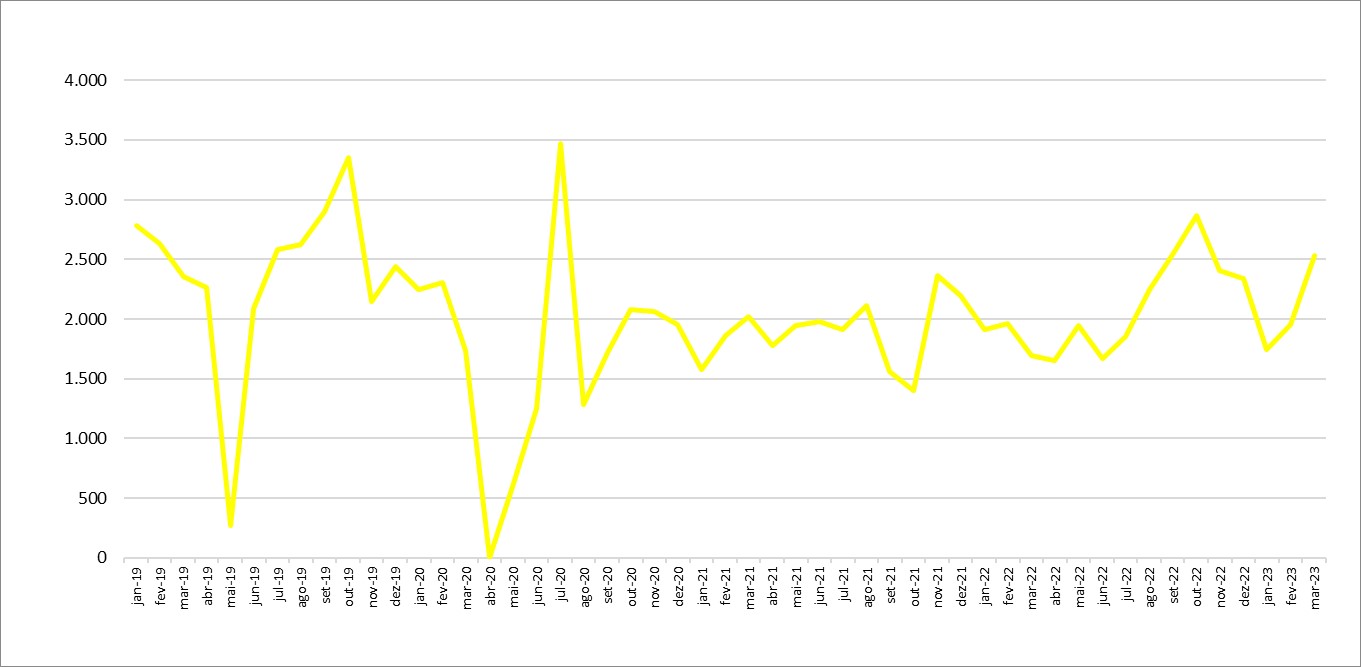
Source: OBMigra (2023), based on data from the General Coordination of Labor Immigration (CGIL).
GRAPH 10
Number of permits granted, by month and occupational groups - Brazil, March 2023
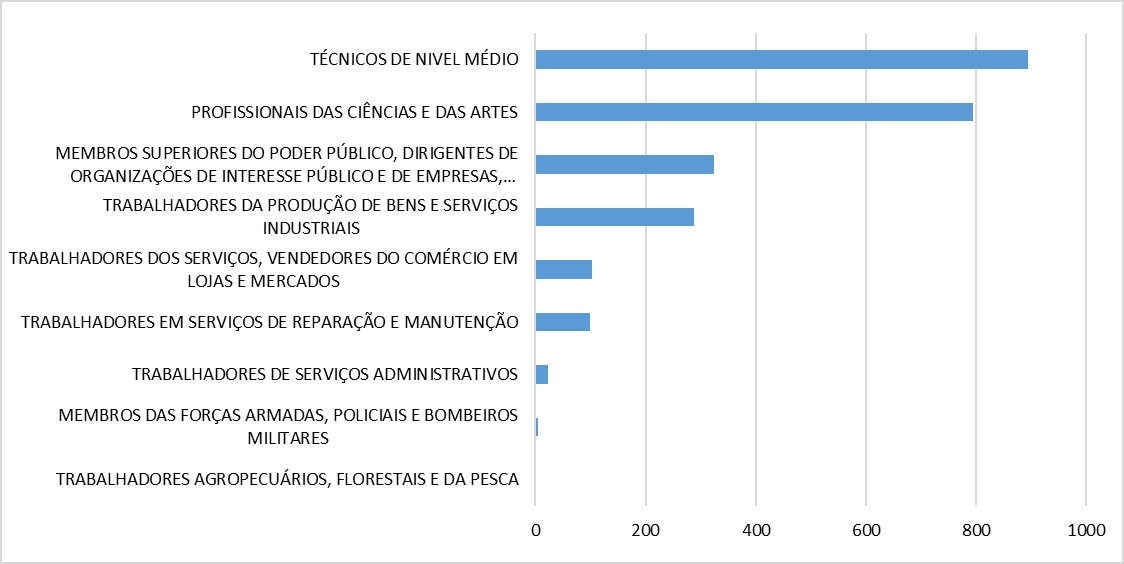
Source: OBMigra (March 2023), based on data from the General Coordination of Labor Immigration/Ministry of Justice and Public Security.
GRAPH 11
Number of permits granted to skilled workers, by main countries - Brazil, March 2023.
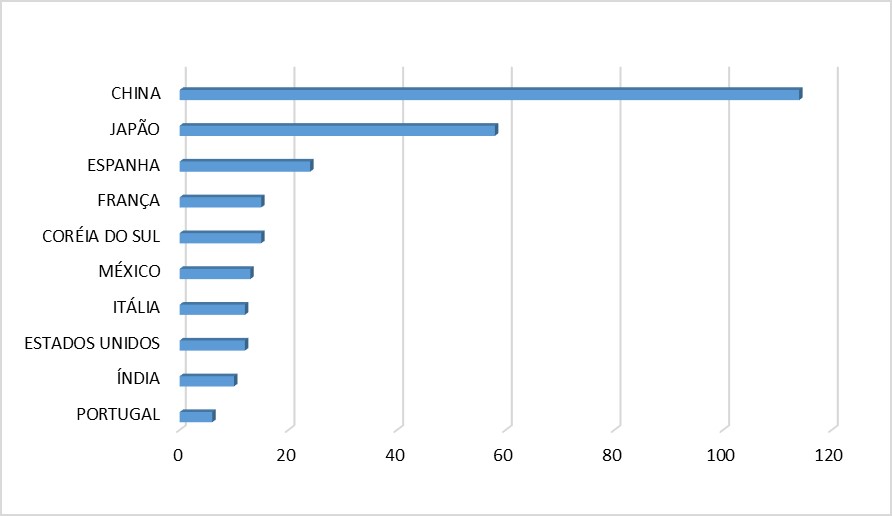
Source: OBMigra (March 2023), based on data from the General Coordination of Labor Immigration/Ministry of Justice and Public Security.
CTPS/RAIS/NOVO CAGED
Harmonized database Work and Social Security Csrd (CTPS)/Annual Report of Social Information (RAIS)/ New General Register of Employed and Unemployed
January and February witnessed a recovery in job creation for immigrant labor, particularly in the formal market, following a negative outcome in December 2022 (Graph 12).
Among occupations, production line feeders and mobile workers in agriculture were the leading job generators in February (Graph 13).
The Southern Region of the country remains dominant in both the movement and generation of jobs for immigrants within the formal market (Map 4).
GRAPH 12
Jobs created for immigrants in the formal labor market, by month - Brazil, 2019/2023
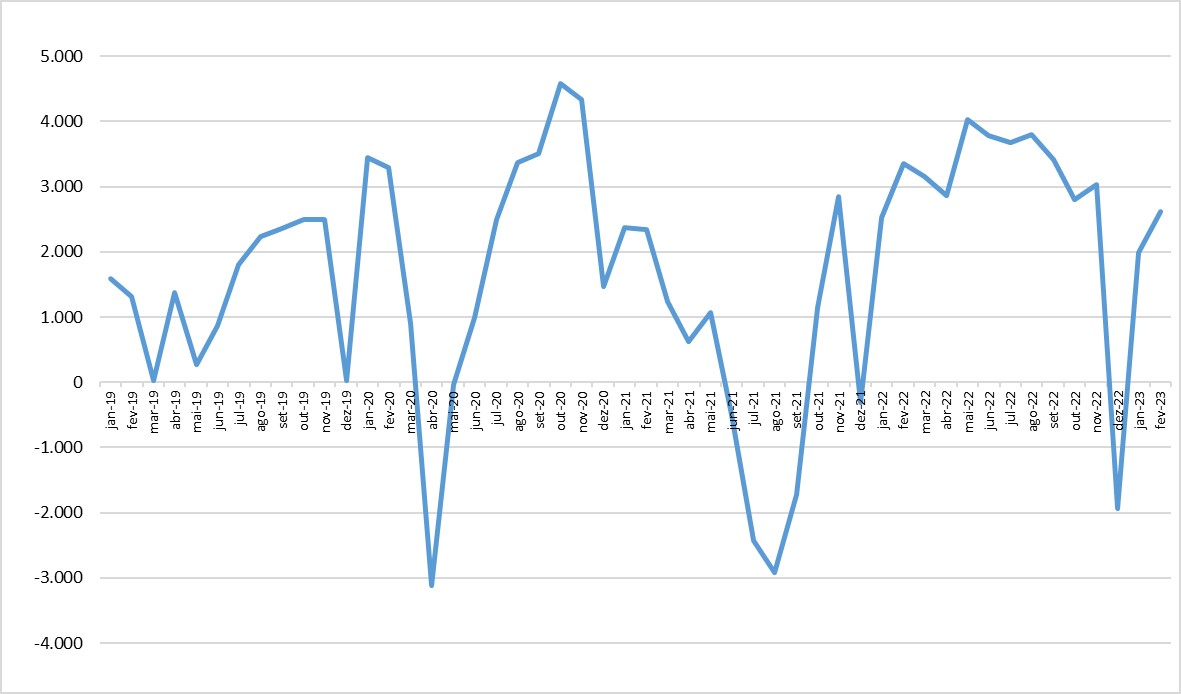
Source: OBMigra (2023), based on data from the harmonized database RAIS-CTPS-CAGED and the Digital System of Tax, Social Security and Labor Obligations (eSocial).
GRAPH 13
Jobs positions created for migrants in the formal labor market - Brazil, February 2023.
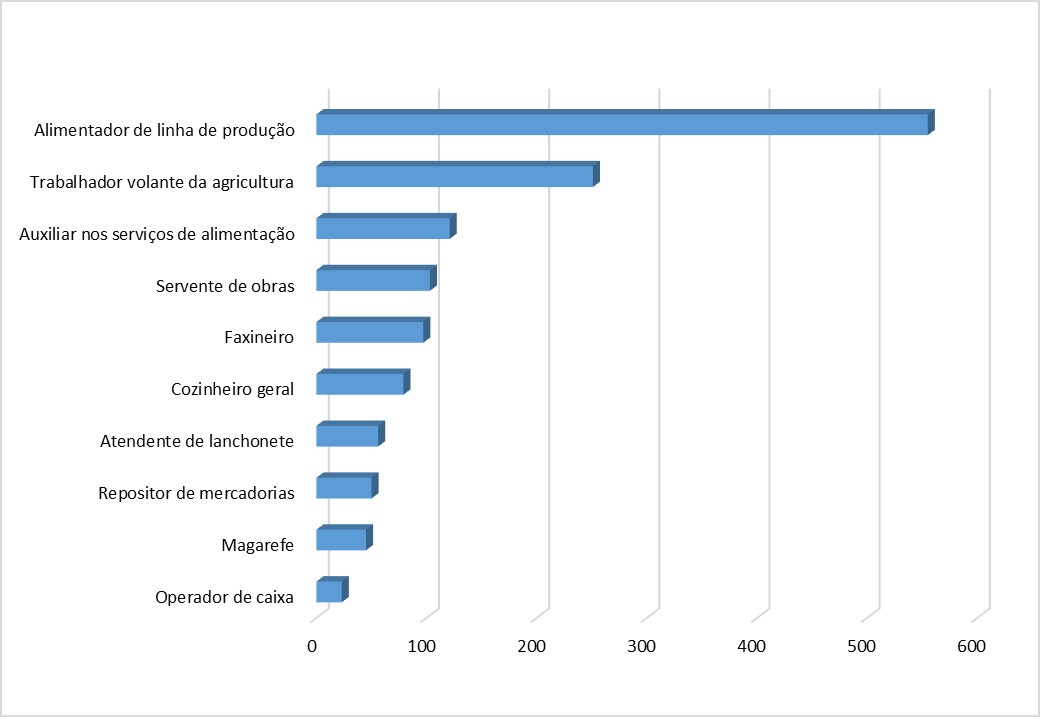
Source: OBMigra (2023), based on data from the harmonized database RAIS-CTPS-CAGED and the Digital System of Tax, Social Security and Labor Obligations (eSocial).
MAP 4
Number of jobs created for immigrants, according to Regions, February 2023.
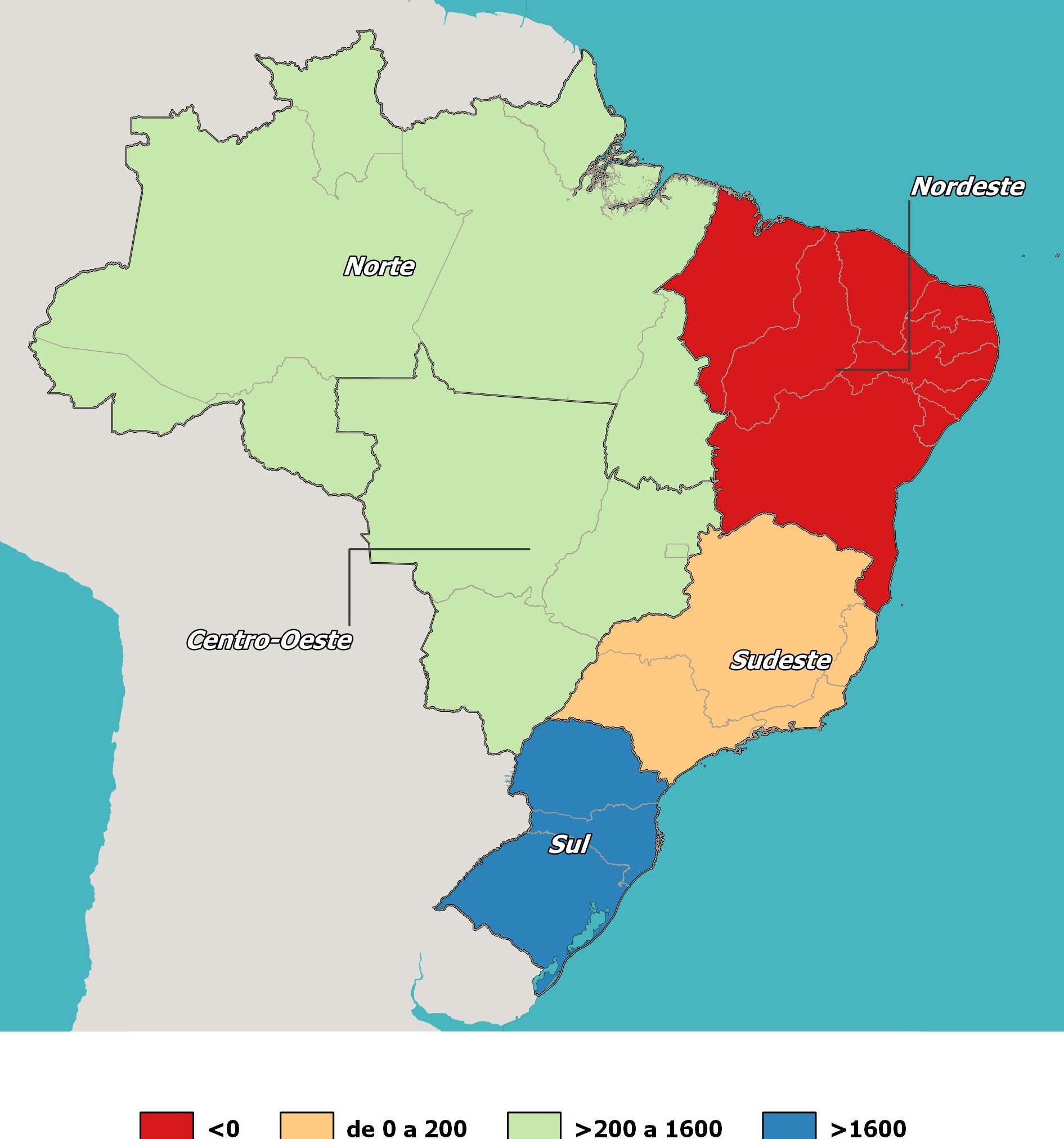
Source: OBMigra (February 2023), based on data from the Ministry of Economy, Harmonized database RAIS-CTPS-CAGED.
BACEN - Transferências Pessoais
BACEN - Personal Bank Transfer
The positive balances in personal transfers exhibited a break in the declining trend that had begun in November 2022, remaining stable during the month of February (Graph 14). However, it is essential to view this result in perspective as decreases were observed in both revenue and expenses, with a more pronounced drop in the latter category.
The United States, Portugal, the United Kingdom, and Switzerland emerged as the primary sources of revenue received in the country (Map 5). Nonetheless, these funds were lower compared to the amounts sent in February 2022 and January 2023.
Regarding remittances sent from Brazil, the United States and Portugal stood out as the main destinations (Map 6). Similarly to revenue, the values were lower when comparing the figures from 12 months ago and the previous month.
Gráfico 14
Balance of transfers via personal accounts in US$ (millions), by month of remittance - Brazil, 2019/2023
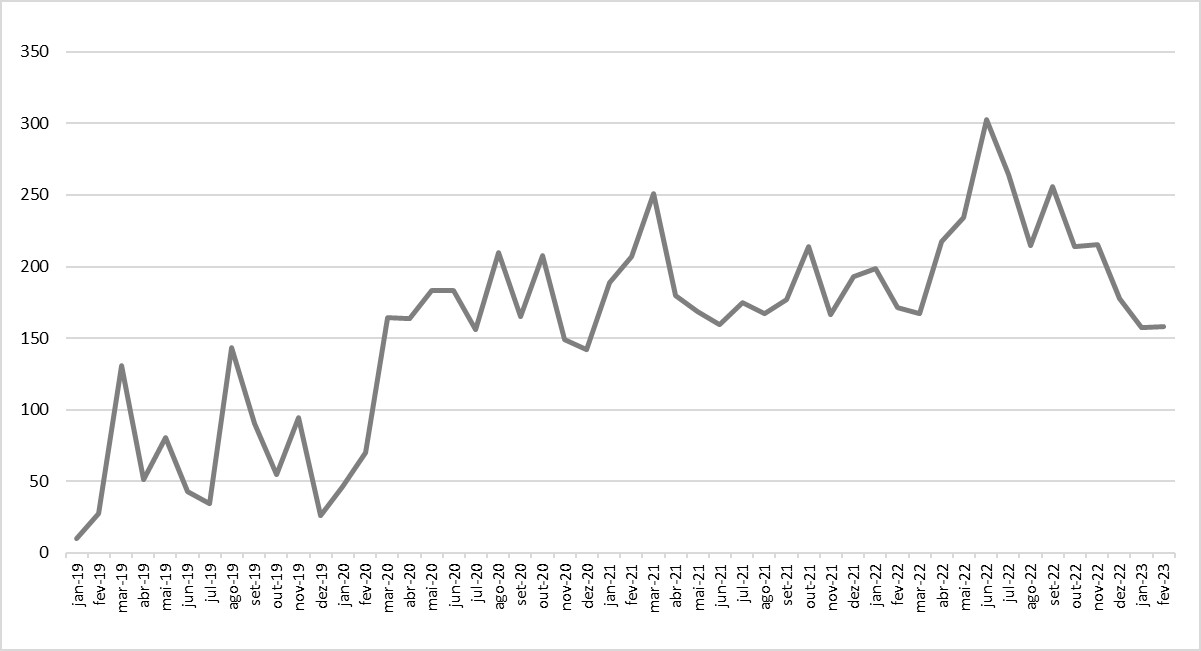
Source: OBMigra (2023), based on data from the Central Bank of Brazil, Department of Statistics.
MAP 5
Transfers via personal accounts in US$ (millions), by revenue and main countries - Brasil, February 2023.
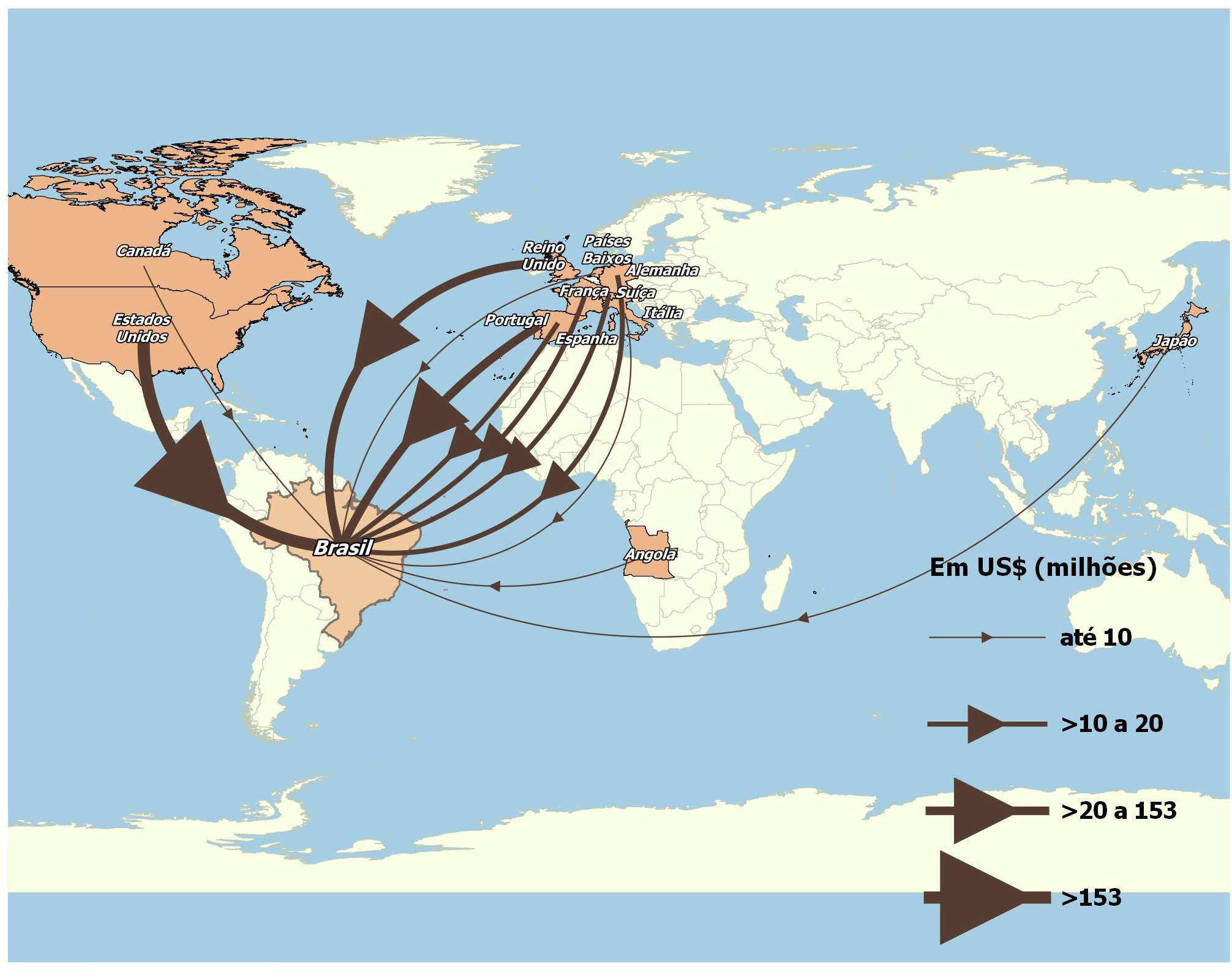
Source: OBMigra (to February 2023), based on data from the Central Bank of Brazil, Department of Statistics.
MAP 6
Transfers via personal accounts in US$ (millions), by expense and by main countries - Brazil, February 2023.
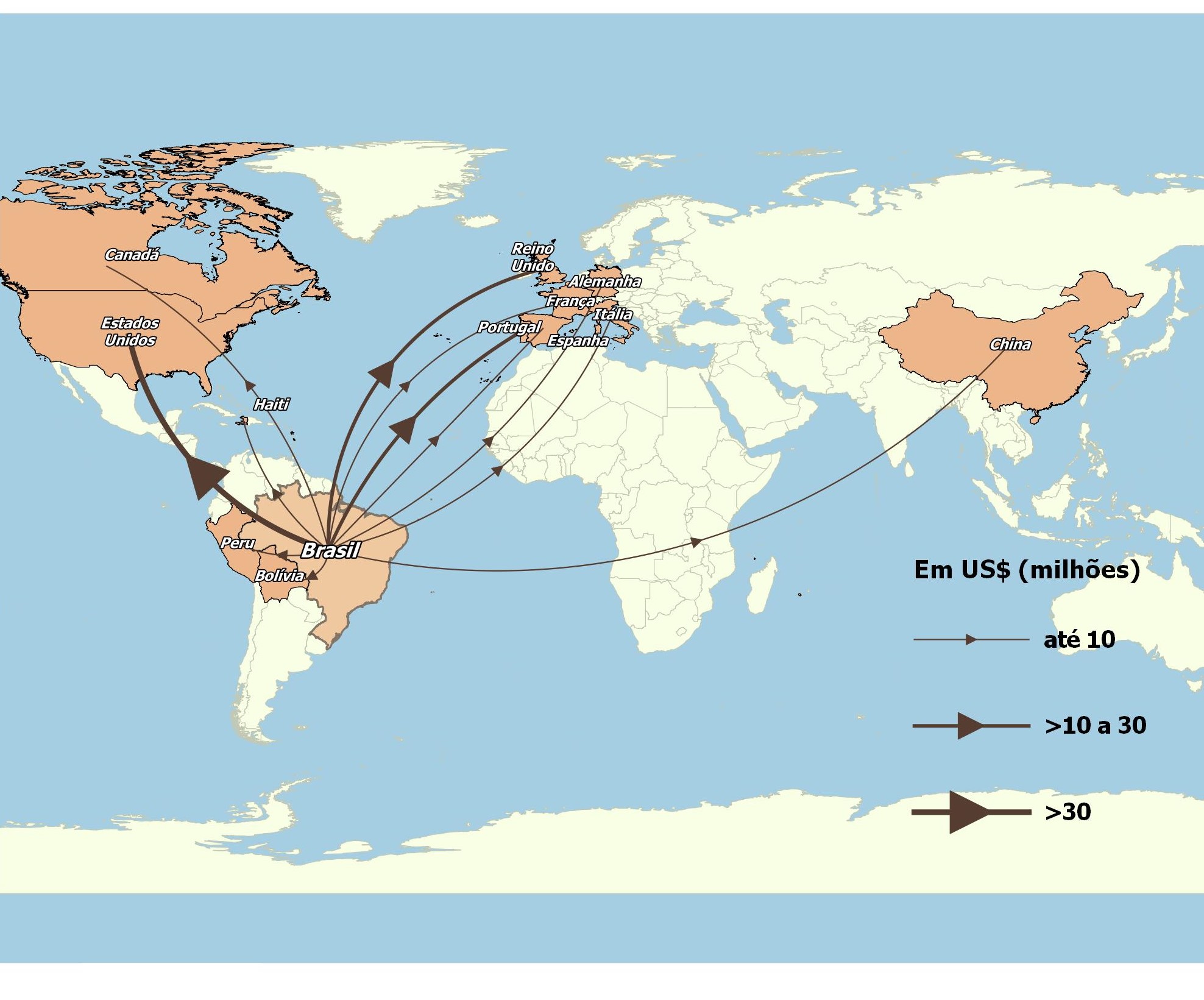
Source: OBMigra (to February 2023), based on data from the Central Bank of Brazil, Department of Statistics.
COMO CITAR
The reproduction of this text and the data contained therein is permitted, provided that proper citation of the source is included. Reproduction for commercial use is prohibited.
How to cite this text:
|
CAVALCANTI, L; OLIVEIRA, T; FURTADO, A; DICK, P; QUINTINO, F; SILVA, B. Acompanhamento de fluxo e empregabilidade dos imigrantes no Brasil: Relatório Mensal do OBMigra Ano 3, Número 3, março de 2023/ Observatório das Migrações Internacionais; Brasília, DF: OBMigra, 2023. Available at: https://portaldeimigracao.mj.gov.br/pt/dados/relatorios-mensais
|




















